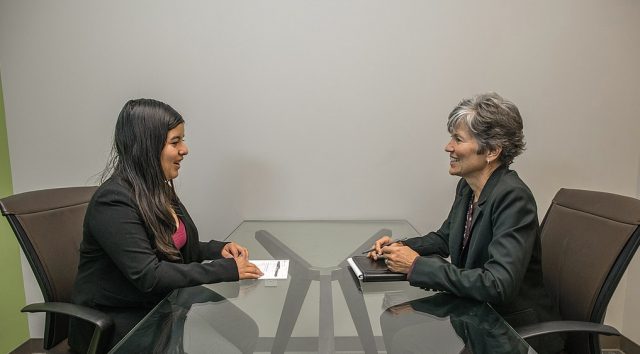A common misconception about audio transcription is that it’s a simple and straightforward process. On the contrary, effectively transcribing audio requires skill, patience, and attention to detail. Not only are you logging potentially life-altering information, but you’re also doing so with the added obstacles of multiple speakers, at times potentially speaking over one another, and unclear audio that’s of poor quality.
In order to transcribe an interview precisely and efficiently, you’ll need to be organized, prepared, and ready for the unexpected. Below are 5 tips for effectively transcribing an interview.
Prepare for Problems
Of course, ideally, there won’t be a single issue or obstacle in your interview transcription. But the first step in any transcribing task should be to have preparations in place just in case you do encounter problems.
Consider your strengths and weaknesses. Are you a skilled typist? Have you allocated enough time to stay productive and precise with your transcription? Preparing for things that may slow you down gives you the opportunity to implement the necessary preparations to deal with them quickly should they occur.
Stop and Listen Before You Transcribe
The next step is to take the time to stop and just listen to the audio. Nothing else. Taking the time to listen before you begin transcribing gives you a better understanding of the content. By listening all the way through, you can identify what the main issues could be.
You’ll be better prepared by knowing details beforehand such as accents, the number of speakers, and any confusing moments such as people speaking over one another or complicated language that you don’t understand.
Have the Best Tools at Hand
Because you’ve stopped and taken the time to listen, you’re now able to get the necessary tools to transcribe your interview effectively.
In general, any skilled transcriber will need a good keyboard and computer with access to quality headphones that can pick up on little details and volume changes in tone and voice.
If transcribing audio is something you’re looking to do more of, you may want to invest in reputable transcription software. While free versions of these tools exist, it’s best to stick to quality software depending on the importance of the transcription.
Consider the Best Way to Identify Each Speaker
Poor quality recordings or several people speaking at the same time can be difficult to log. In order to separate and identify each speaker in the recording, take some time to consider what the goal of the transcription is, and what industry it’s within.
The standard practice of identifying people whenever they speak may not always be the most effective method. In fact, time-stamping the interview audio in three-minute intervals may be more convenient and useful, with additional time stamps included that highlight crucial details.
Type a Rough Draft, Then Hone It
Rough drafts don’t have to be perfect, and there’s no pressure to get it exactly right, which offers you freer and faster typing. Accuracy isn’t the goal of a rough draft. Instead, it gives you a blueprint to edit down and hone into a more concise and relevant transcription.
Once you’ve edited and honed your rough draft, revisit the audio and make sure your edits are accurate and in line with the recording itself. When you’re certain of the attention to detail after this additional listen and edit, you can begin to format it into your final interview transcript.

A professional writer with over a decade of incessant writing skills. Her topics of interest and expertise range from health, nutrition and psychology.




